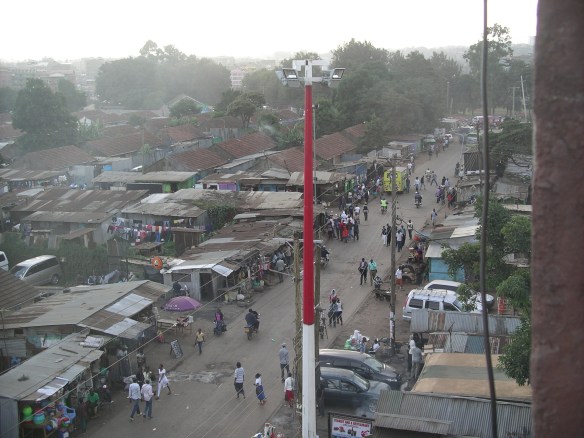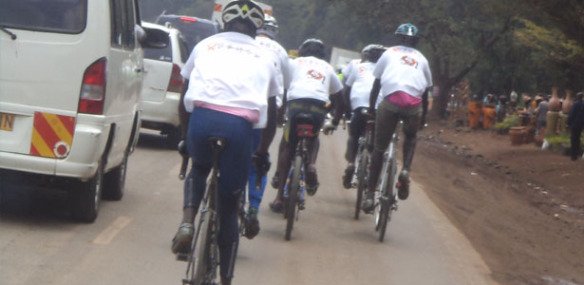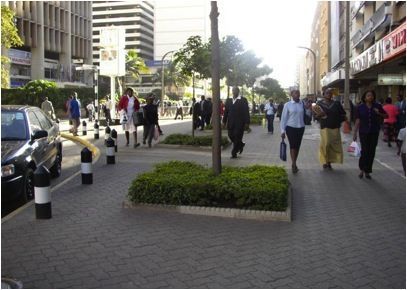
Many Nairobi roads have little to no facilities for walking and cycling
By Henry Ochieng, Chief Executive Officer, Kenya Alliance of Resident Associations
Kenya, like many other African countries places much emphasis on moving cars when developing road infrastructure as opposed to moving people.
This has resulted in construction of roads without provision for non motorized mode of transport such us walking or cycling. Little attention has been accorded to the needs of those of who walk or cycle every day yet these are the most common modes of transport in Kenya. In Nairobi for instance, 50% of the population either walk or cycle to their destination every day.
Non Motorized Transport (NMT) users are exposed to fast, aggressive and at times careless motorized transport users resulting to high number of road crashes involving pedestrians or cyclists. According to National Transport and Safety Authority (NTSA), an estimated 3,000 deaths occur annually as a result of road crushes and 40% of these are pedestrians.
In Nairobi, out of the 668 road crash deaths recorded in 2015, 497 were pedestrians – a whopping 74%. These high pedestrian deaths can largely be attributed to lack of NMT facilities that leads to a scramble for existing road spaces between the motorized and non motorized transport users.

Cyclists have long been ignored on Nairobi’s streets-yet cycling is a healthy way to travel that reduces pollution and congestion
These statistics firmly justifies the need for Kenya to have a paradigm shift and start focusing more on facilitating movement of people and not just vehicles. Besides reducing road fatalities, investment in NMT facilities has many other benefits. NMT is environmental friendly and is a zero carbon transport mode thus resulting to less air pollution.
There are also health benefits as less air pollution reduces incidences of health complications such as respiratory disease. NMT improves affordable access to vital services such as health, education and employment. Major towns in Nairobi have been grappling with heavy traffic on the roads leading to loss of productivity as several hours are wasted on traffic jams. This is partly attributed to the fact that there are too many vehicles on the roads. Investment in proper NMT facilities is a good incentive for people to walk or cycle to their destinations hence reducing the number of vehicles on the roads.
In more advanced cities like Amsterdam and Copenhagen, walking and cycling are the preferred modes of transport and are given right of way. This is mainly because they have adequately invested in NMT infrastructure and it is not only safe but convenient to walk or cycle.
At a national NMT stakeholders workshop held in Nairobi in November last year, participants were unanimous on the need for Government to prioritize and increase investment on NMT facilities development in Kenya.
It is comforting to note that the leadership of Nairobi County is gradually appreciating the importance of NMT and putting in place mechanisms aimed at improving investment in NMT facilities. Last year, Nairobi City County Government in collaboration with The Kenya Alliance of Resident Associations (KARA) and United Nation Environment Programme (UNEP) developed a Non Motorized Transport Policy for the County. The policy is awaiting adoption by the County Assembly.
Given the urgency and importance of developing NMT facilities, we expect that the Nairobi City County Governor, Dr. Evans Kidero will take personal interest in the policy and lead its implementation. It should not be yet another policy document gathering dust in the shelves. The County should also fast track the development of the streets and roads design manual (taking into consideration provisions for NMT facilities), to guide planning, design and management of all transport facilities and amenities within the County.
Until deliberate and drastic steps towards investment in NMT is taken both at the National and County level, more NMT users will continue losing their lives, there will be more negative environmental and health impact caused by emission of carbon and green housse gases and the traffic congestion challenges will persist.
This was reposted with permission from the author.

